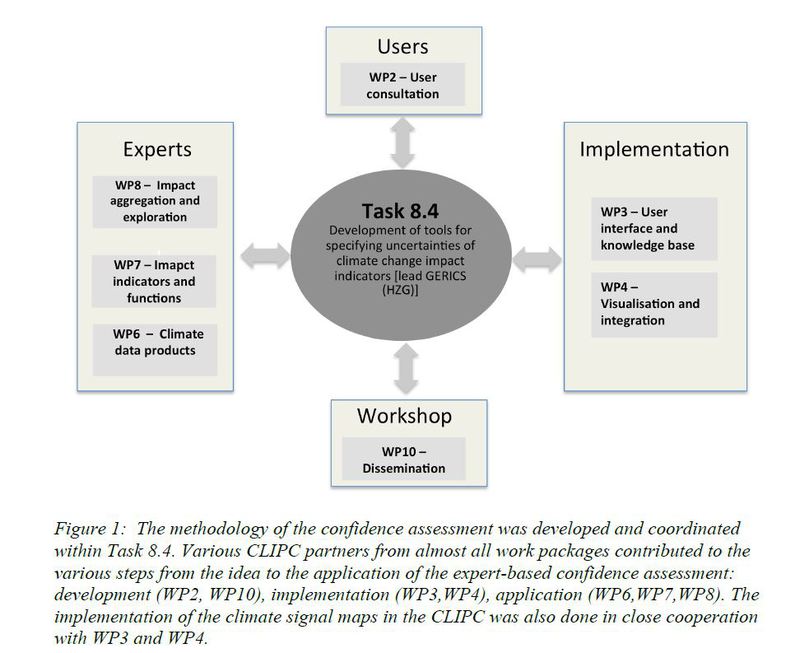D8.4 Uncertainty assessment of climate impact indicators
Aim and Objective

This deliverables summarises how the CLIPC project dealt and engaged with the topic ‘uncertainty1’ and how it is presented and communicated in the final version of the CLIPC portal. This deliverable is a constituent part of Work Package 8 (WP8) summarising the results of task 8.4 ‘Development of tools specifying uncertainties of climate impactclimate impact
See Impact Assessment
indicators’. The specific objectives of task 8.4 include:
a) Development of a methodology and tools to specify the uncertainty of climate change impact indicators developed in WP7 and WP8 with a tailor-made analysis to identify and communicate uncertainties of impact indicators
b) Statistical estimation of the robustness of tier 1 climate impact indicators based on different climate model scenariosscenarios
Scenarios can be thought of as stories of possible futures. They allow the description of factors that are difficult to quantify. In the context of climate change scenarios are used for the future development of factors such as governance, social structures, future population growth, technical development and agriculture. These descriptions are essential to model the future climate. covered in WP6
The development steps and first implementations of the methodology are described in detail in three previous milestones (MS34, MS37 & MS 39). Prime concept ideas of presenting uncertainty with confidenceconfidence
The validity of a finding based on the type, amount, quality, and consistency of evidence (e.g., mechanistic understanding, theory, data, models, expert judgment) and on the degree of agreement. Confidence is expressed qualitatively (Mastrandrea et al., 2010).
are described in MS34. The methodology of providing confidence information for the climate impact indicators is based on a questionnaire and user consultations as described in MS37. The subsequent MS39 presents the workflow of the implementation of the expert-based confidence information into the CLIPC portal.
The strategy how the CLIPC project engaged with uncertainties and how the management of confidence information is presented in the final version of the CLIPC portal is the main object of this deliverable 8.4.
Download the document here